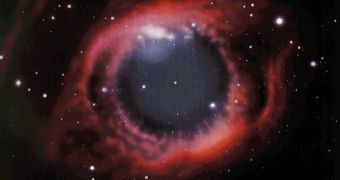Two days ago, the small probe that represents the accomplishment of the efforts of Southwest Research Institute experts, was successfully launched into space on a Pegasus rocket carried by an L-1011 jet plane at high altitude above the Pacific.
The probe was carried by the Pegasus for about 130 miles onto its orbit above Earth. Its goal is to reach the boundaries of the heliosphere, the protective bubble that the Sun envelops its planetary system in, and which is formed of particles carried by the solar wind. In the target region, the particles emitted by the Sun meet the ones from the outer space, and interact with them.
During its 2-year long mission, the octagonal IBEX probe will help scientists gain more insight on the events that take place at the “termination shock” zone, as well as on the reasons and consequences of the recent record low for solar wind in 50 years. In this regard, the Interstellar Boundary Explorer (IBEX) craft will make use of its two cameras to capture images of the surroundings, and to map the occurring collision events. It will provide additional intel both on the solar particles and the galactic ones, as well as on the way they interact.
According to David J. McComas, principal investigator for IBEX and senior executive director of the Space Science and Engineering Division at the San Antonio-based Southwest Research Institute, “The interstellar boundary regions are critical because they shield us from the vast majority of dangerous galactic cosmic rays, which otherwise would penetrate into Earth's orbit and make human spaceflight much more dangerous.”
The small, 50 centimeter-wide probe will follow the 2 Voyager missions launched more than 30 years ago on their way to the margins of the heliosphere, but will be the first of such a reduced size and scope from a series of cheap small-scale probes in NASA's Small Explorers project.

 14 DAY TRIAL //
14 DAY TRIAL //